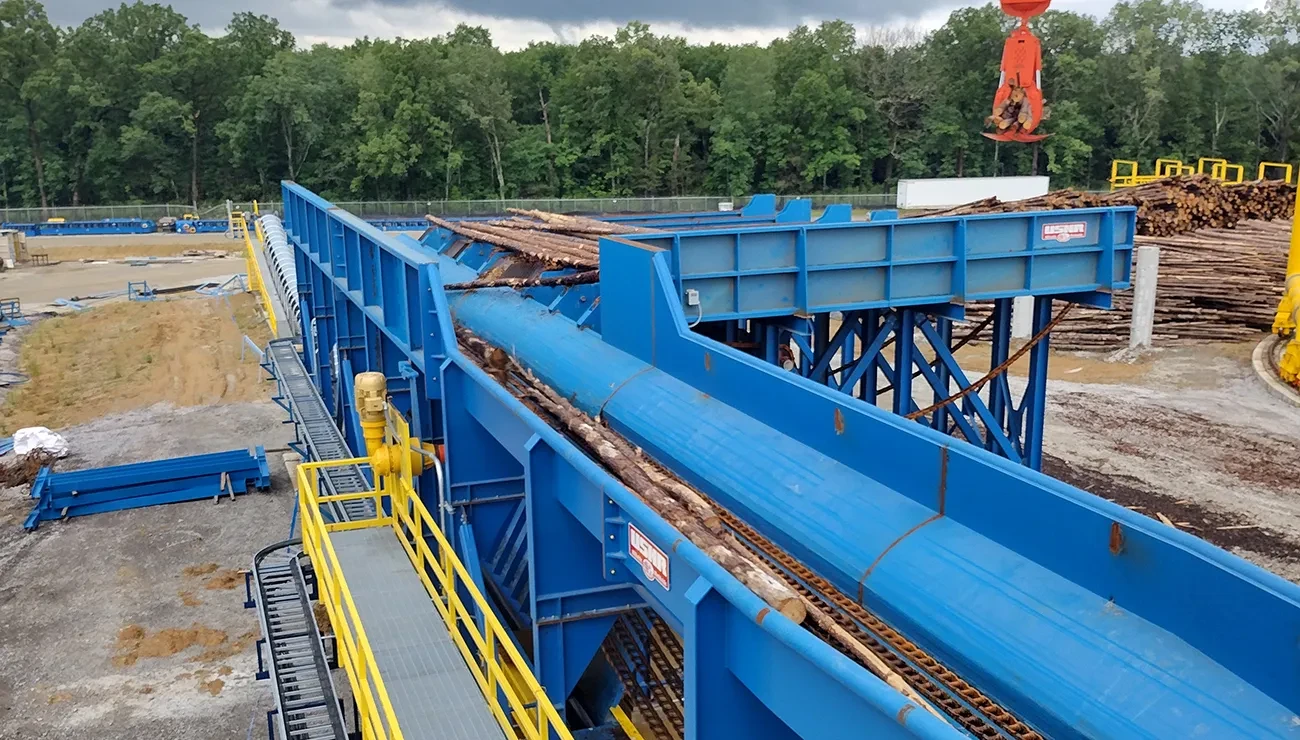
Torrefaction: unlocking the full potential of green energy transitions
11 Aug 2025For the foreseeable future, relatively inexpensive, widely abundant and accessible renewable biomass energy sources are set to be key drivers in fossil-fuel transitions. Making the most of raw materials is essential, along with leveraging the advantages of advanced processing and pretreatment technologies to maximize biomass’ combustion efficiencies.
In recent years, a biomass pretreatment gaining greater focus is torrefaction. It may hold the promise of overcoming many of the challenges that accompany traditionally pretreated and processed biomass, improving its effectiveness as a sustainable, renewable energy source.
Many of us are familiar with drying biomass to make it burn more efficiently or the pelletizing process to make it easier to transport and ensure a more consistent combustion profile, but these have some drawbacks. Pellets can self-ignite and are very fragile and sensitive to degradation and microbial action, and dried biomass quickly reabsorbs moisture.
What is torrefaction?
So, what is torrefaction and what can it offer the renewable bioenergy market? Essentially, torrefaction is a low-temperature, around 200 to 300 degrees Celsius, low-energy consumption, thermal pretreatment process for biomass, conducted in an inert, oxygen-free atmosphere. It significantly improves several key properties of biomass, rendering it energy dense, hydrophobic, and grindable. It also has a low moisture content, which is beneficial for downstream gasification processes, improving their efficiency and lowering smoke production.
Torrefied biomass can also be stored in the open air for long periods with minimal risk of moisture absorbance, decomposition and decay.
The benefits of torrefied biomass, lower moisture contents, higher calorific value and improved transportation characteristics, represent considerable commercial advantages for the biomass industry.
While Bruks Siwertell’s biomass and wood-processing and handling equipment is not directly involved in the torrefaction process, our technology is instrumental in nearly every stage of the biomass supply chain, enabling torrefaction facilities to gain the greatest yields from raw biomass feedstocks.
All in the preparation
Torrefaction does not start in the reactor, it begins with preparing and processing biomass feedstocks, and this is where Bruks Siwertell’s wood-processing and biomass handling expertise and technologies are making a difference.
Raw biomass materials such as tree stumps, branches, slash piles and other forestry waste and sawmill residues vary significantly in size, shape, and moisture content. Feedstocks need to be processed for consistency as substantial variations can cause uneven heating, reducing energy efficiency and increasing waste.
The largest material that Bruks Siwertell handles and processes is wood. We supply complete technology chains for many biomass handling and wood-processing industries, and our portfolio of Bruks and West Salem Machinery (WSM) biomass handling and wood-processing technology for the biofiber market includes industrial wood chippers, shredders, grinding and milling machinery, screening systems and conveyors, as well as butt-flare reducers and no-knife resizers, knife-ring flakers, bark, compost, mulch and urban waste wood processing, and storage and reclaiming solutions.
This fiber conversion technology, and considerable industry expertise, enable any torrefaction facility to maximize the potential of its raw materials. When coupled with the commercial handling, storage, transportation and combustion advantages of torrefied biomass, it would seem that there are even greater gains to be had from waste wood and agricultural and forestry byproducts.
Making all fiber count
Wood-processing facilities are some of the most demanding industrial settings, requiring wood-processing machinery to be capable of reliably performing in extremely high-use, high-impact conditions. Our technology is widely used in processing sawmill residues, wood chips, shavings, post-consumer wood waste, construction and demolition waste wood and material from sustainably managed forests.
Uniform fiber delivers better downstream results, and effective screening, hogging, and milling are keys to uniformity. Our equipment, such as WSM feeders, Bruks Rotom hammer hogs, WSM hogs, conveyors, screens, and sizing systems transform low-cost raw materials into a consistently sized and clean fiber product perfectly suited for the torrefaction process.
Moving biomass, minimizing losses
Feedstocks and torrefied biomass need to be transferred and transported cleanly and efficiently. Our innovative, low-friction, air-supported conveyor solutions, like The Belt Conveyor and the Tubulator, are totally enclosed, minimizing any fugitive dust, and deliver exceptionally smooth conveying, and long-term maintenance and operational cost savings.
Bruks Siwertell also offers a unique truck unloading portfolio capable of distributing the huge volumes of processed wood and biomass required by the bioenergy and biofuel markets, including torrefaction facilities.
Our range includes end-dumping and self-unloading trucks, with back-on and drive-over truck dump versions offering excellent cycle times, supporting operations where a receiving facility can process hundreds of trucks a day. Our truck dumper platforms comfortably offer two million lift and lower cycles across decades of reliable service and can be coupled with receiving hoppers that reduce dust emissions to minimal levels.
Much biomass is destined for international trades, centering a focus on port equipment and logistics. Again, Bruks Siwertell offers market-leading capabilities in this arena, with many biomass facilities and port terminals relying on enclosed, screw-type Siwertell ship unloaders and ship loaders.
Stacker reclaimers, and integrated storage systems complete Bruks Siwertell’s biomass processing and handling capabilities, offering high levels of automation and ensuring minimal carbon footprints, environmental protection, and high throughputs, even in the most challenging environments.
Smart, integrated supply chains
Torrefaction may happen in a reactor, but its success relies on everything that comes before and after. By integrating preprocessing, processing, conveying, transportation, port technology and storage and reclaiming, Bruks Siwertell provides the technology backbone for the commercial success of torrefaction operations worldwide.
The result is a safer, more efficient, and scalable biomass transformation process that helps unlock the full potential of torrefied biomass as a low-carbon energy source.
Whether operators are looking for a new torrefaction facility or optimizing an existing one, Bruks Siwertell offers the technologies to help transform raw biomass into a high-performance fuel of the future.
 Bruks-Siwertell
Bruks-Siwertell